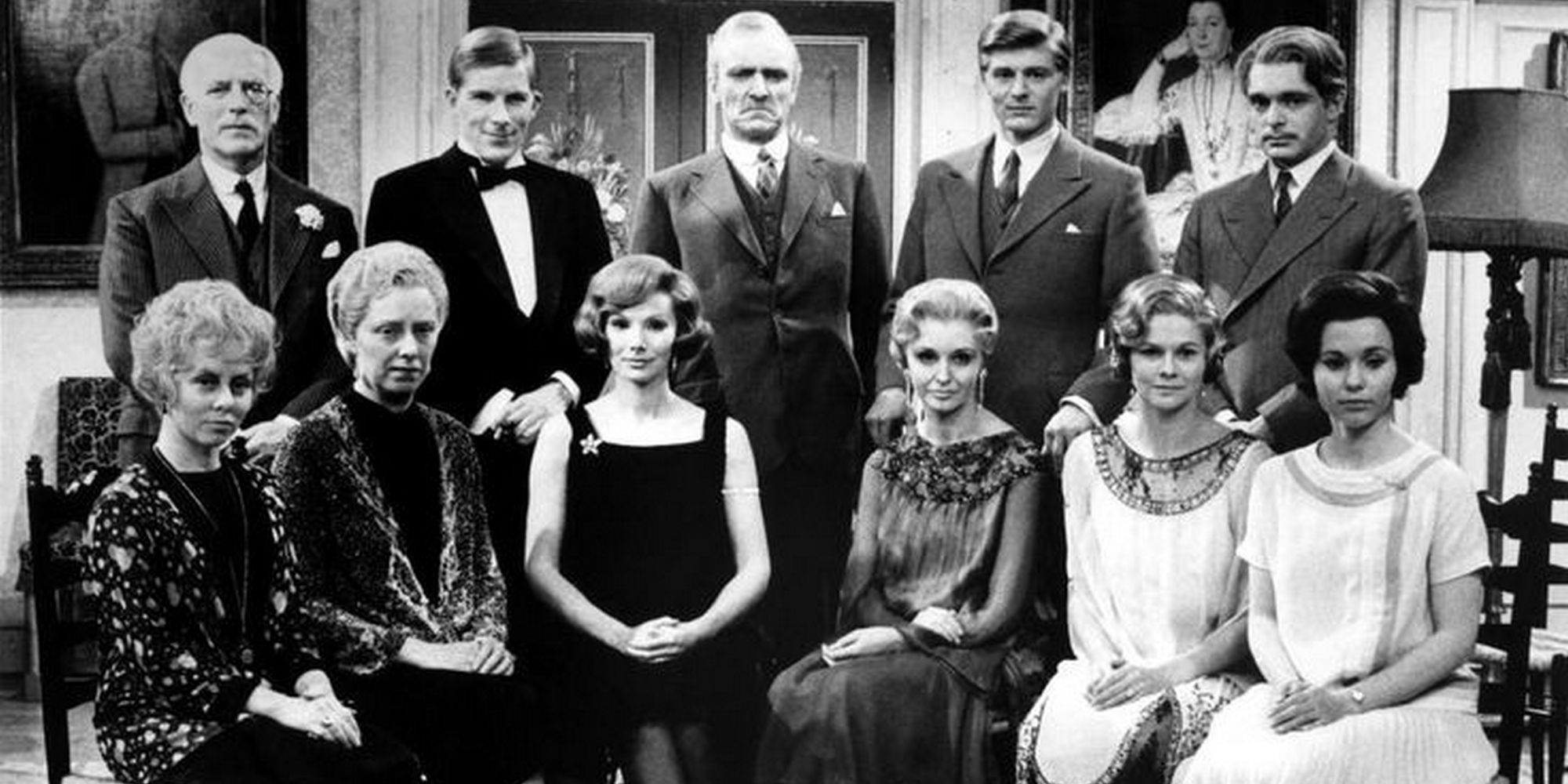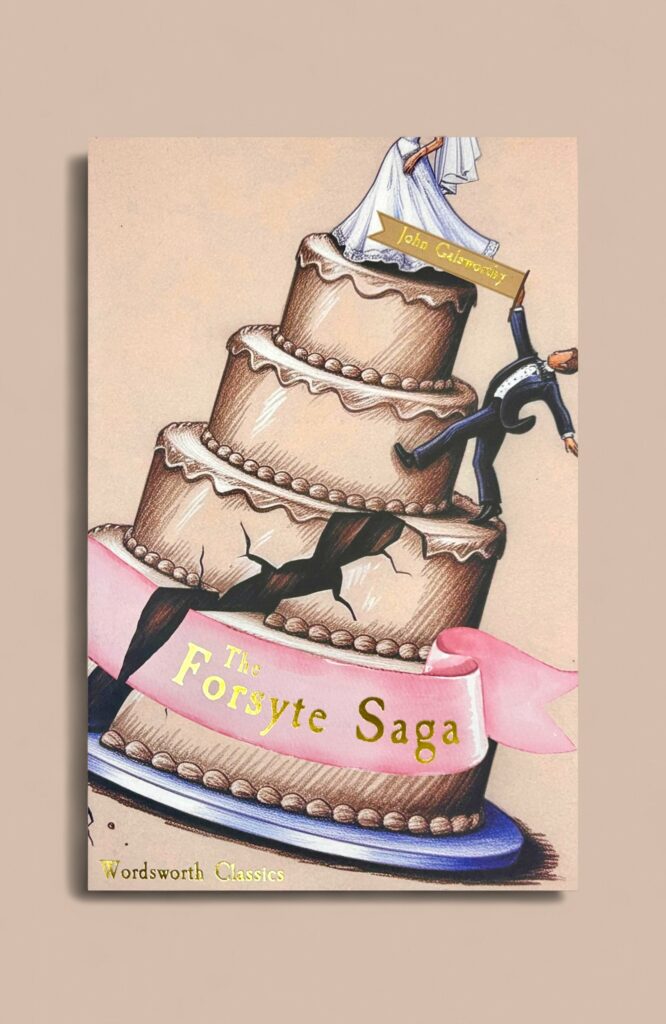
David Stuart Davies looks at The Forsyte Saga
David Stuart Davies looks at John Galsworthy’s classic novels that make up ‘The Forsyte Saga’
One of BBC TV’s greatest drama productions in the late sixties was the adaptation of John Galsworthy’s novels which make up The Forsyte Saga, the unfolding tale of an upper-middle-class family in London during the Victorian and Edwardian eras. The twenty-six-part series is widely considered to be the first modern TV costume drama. It was a phenomenon in Britain: Soames and Irene’s marriage was the subject of national debate, and local vicars were reportedly asked to change the times of services so that their congregations could be home in time for ‘Forsyte.’ The final episode attracted over eighteen million viewers. The series re-ignited an interest in Galsworthy’s work, bringing the novels to a new generation of readers.
The Forsyte Saga, which was first published under that title in 1922, is a set of novels which chronicle the vicissitudes of three generations of a large upper-middle-class English family whose wealth was based on business. Only a few generations removed from their farming ancestors, the family is keenly aware of its status as ‘new money’. The saga begins as the nineteenth century is drawing to a close, and the upper middle classes, with their property and propriety, are becoming a dying section of society. The Forsytes are blind to this fact, clinging to their conventions and ‘brilliant respectability’.
The main character, Soames Forsyte, sees himself as a ‘man of property’ by virtue of his ability to accumulate material possessions—but this does bring him pleasure. He has married Irene much against her wishes; she is described as having ‘Beauty impinging on a possessive world.’ Soames attempts to tame and control her but she finds him loathsome and finally rebels and extricates herself from the sterile marriage when she falls in love with another man. Their relationship explores one of the main themes of the novels, which is an examination of the possessive instinct, embodied in the character of Soames, a man with a passion for acquiring all things desirable and for exercising his proprietary rights to the utmost, even over his reluctant wife, not caring who is damaged as long as he succeeds in getting his way. Indeed, as he becomes more frustrated and tormented by jealousy and the desire to possess Irene completely, he eventually commits an act of marital rape. In presenting this scenario Galsworthy was advocating legal reform to make such an action a crime. However, Soames is not a one-dimensional character; the author gives him depth and realism. While his faults are clearly depicted, through his failure to win Irene’s affection and agonised frustration at failing to father a male heir, he becomes strangely sympathetic. As a result, Galsworthy allows the reader to gain an increasing awareness of the ways in which Soames has punished himself, partly wittingly, largely unwittingly, for his failings towards others.
The other key character in the saga is Soames’ cousin, young Jolyon, who is liberal in outlook, and uncomfortable in being part of an affluent family circle. He is a free thinker and develops a successful career as a watercolour artist, a calling which is a far cry from the fierce acquisitive business world of the rest of the family. Young Jolyon disturbs the solid respectability of the Forsytes by falling in love with his daughter’s Austrian governess and fathering her child. To the fury of his father, Young Jolylon leaves his wife and sets up a modest home with the woman he loves, thus isolating himself from the rest of the clan for many years.
The novel’s clever and enthralling blend of financial and sexual intrigue is brilliantly conceived. John Galsworthy (1867 – 1933) was himself born into a successful upper-middle-class family and was educated at Harrow and studied law at New College, Oxford. Drawing on his own privileged background, he highlights the Forsytes’ insular, snobbish, and acquisitive attitudes and their suffocating moral codes. Galsworthy is viewed as one of the first writers of the Edwardian era who challenged some of the ideals of society depicted in the preceding literature of Victorian England. The freshness and realism of his writing and the persuasive presentation of the attitudes, foibles and dilemmas of the time, have not faded with the passage of years. The intricacies and coincidences in the plot would seem somewhat gauche in the hands of a lesser writer, but Galsworthy handles the entwining threads of narrative with great skill and aplomb, carrying the eager reader along with him. The author was awarded the Nobel Prize in Literature in 1932 ‘for his distinguished art of narration which takes its highest form in The Forsyte Saga’.
Apart from the brilliant BBC series of the 1960s, The Forsyte Saga has been dramatized for both the big and small screen on other occasions. In the silent era, the book was filmed in 1920 and 1922. A 1949 adaptation from Hollywood, called That Forsyte Woman featured the unlikely casting of Errol Flynn as the uptight Soames. Also in the cast were Greer Garson as Irene and Walter Pidgeon as Young Jolyon, both of whom were really too old for their roles.
In 2002 Granada Television produced a mini-series based on the saga. The idea came initially from David Liddiment, ITV’s director of channels, who seized on the Forsyte novels not only as a great achievement in English literature but also for their iconic status in British television. It starred Damian Lewis as Soames, Gina McKee as Irene and Rupert Graves as Young Jolyon. Critical response was positive in general, although Time magazine gave the production a tepid review, calling it ‘lush, well-acted – and stale.’ Certainly, the series did not make the same impact as the earlier one. However, it would seem to me that the time is now ripe for a new version, for the public still remains fascinated by the shenanigans of the upper classes of a bygone age as the success of Downton Abbey has proved. However, while we wait for this fresh adaptation of the saga to materialise, we still have brilliant novels to engage and entertain us.
Books associated with this article
